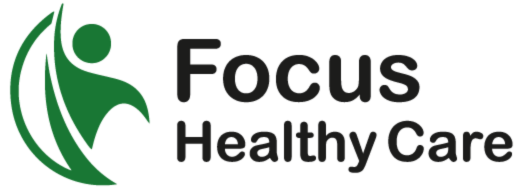The ABC Diet has become popular for those trying to lose weight in a hurry. With promises of rapid results, it’s no surprise that people are curious about the ABC diet schedule, its effectiveness, and how it compares in before and after success stories. In this blog post, we will be discussing the ABC Diet and how it exactly works, what benefits can you gain from doing this diet and what are its potential health risks.
What is the ABC Diet?
ABC Diet or Ana Boot Camp Diet, is an extensive weight loss program that last for 50 DAYS. It revolves around some extreme calorie restriction, typically with every other day consuming very little or nothing. It is designed for quick weight loss which attracts individuals looking for quick results. But its extreme nature often means it is heavily disputed and seen as unsafe by medical professionals.
Read more: Diet Pepsi Ingredients: What’s Inside Your Low-Calorie Soda
How Does the ABC Diet Work?
ABC Diet is a brutal 50-day weight loss plan where you decrease calories every other day in order for the body to continue to burn fat. It involves 5 Stages and every stage guides you in taking certain amount of caloric intake but also fasting days. This prevents the body from going into “starvation mode” which would cause a slow down in the metabolism process and weight gain.
The plan encourages you to eat nutrient-dense foods, primarily fruits and vegetables, and to stay hydrated by drinking plenty of water. Below is an outline of the ABC Diet’s five phases, with details on daily calorie consumption.
Step 1 – First 10 Days
- Day 1-2: Begin with 500 calories per day.
- Day 3: Lower your intake to 300 calories.
- Day 4: Raise the intake slightly to 400 calories.
- Day 5: Drop to just 100 calories.
- Day 6: Consume 200 calories.
- Day 7-9: Increase by 100 calories each day, reaching 500 calories on Day 9.
- Day 10: Fasting – abstain from eating for the whole day.
For the first 10 days, start with 500 calories on Days 1 and 2. Then reduce it to 300 on Day 3. On Day 4, increase your intake to 400, and by Day 5, drop it down to 100. The following days see a gradual increase in calories until reaching 500 on Day 9, with a fast on Day 10.
Period 2 – Day 11 to Day 20
- Day 11: Start with 150 calories.
- Day 12: Increase slightly to 200 calories.
- Day 13: Raise it further to 400 calories.
- Day 14-16: Gradually reduce calories to 350, then 250, and finally to 200 calories.
- Day 17: Fasting – skip all meals.
- Day 18: Consume 200 calories.
- Day 19: Decrease to 100 calories.
- Day 20: Conclude with another day of fasting.
Begin this period with 150 calories, then increase to 200 on the next day. Gradually raise the intake to 400 before reducing it to 350, 250, and finally 200. A fast on Day 7 is followed by 200 calories on Day 8 and 100 on Day 9. Conclude this phase with another fast on Day 10.
Step 3 – Day 21 to Day 30
- Day 21: Start with 300 calories.
- Day 22-25: Gradually reduce calories by 50 each day, finishing with 50 calories on Day 25.
- Day 26: Increase intake to 100 calories.
- Day 27: Eat 200 calories.
- Day 28: Bump up to 300 calories.
- Day 29: Increase significantly to 800 calories.
- Day 30: Fasting – no meals for the day.
Start Day 21 with 300 calories, followed by a gradual decrease of 50 calories each day until reaching 50 calories per day. Afterward, consume 100 calories, followed by 200 for two days. Increase your intake to 300 calories, then end this phase with 800 calories on Day 9, followed by a fast on Day 30. [1]
Step 4 – Day 31 to Day 34
- Day 31: Begin with 250 calories.
- Day 32-33: Increase by 100 calories each day, reaching 450 calories by Day 33.
- Day 34: Fasting – skip meals entirely.
Begin Phase 4 by consuming 250 calories. For the next two days, increase your calorie intake by 100 calories per day. Finally, fast on the 4th day.
Phase 5 – Day 35 to Day 50
It is a 15 day oscillatory calorie restriction diet and fasting phase.
- Day 35: Start with 500 calories.
- Day 36-41: Reduce by 50 calories daily until you reach 200 calories by Day 41.
- Day 42: Stick to 200 calories.
- Day 43: Raise intake to 250 calories.
- Day 44: Drop back to 200 calories.
- Day 45: Reduce further to 150 calories.
- Day 46: Increase to 300 calories.
- Day 47-48: Alternate between 200 and 150 calories.
- Day 49-50: End the plan with a fasting day.
The phase begins with 500 calories and decreases 50 every day until the final day, which is Day 7 with only 200 calories. Day 8 — 200 calories Day 9 — 250 calories Next, bring the intake down to 200, then 150. End the ABC diet with a fast.
Important Notes
Although the ABC Diet can lead to substantial weight loss as a result of drastic calorie reduction, it is important to keep in mind the health effects longterm restriction of food has on our bodies. Fad dieters like this lose weight so fast because they deprive themselves of essential nutrients, leaving them weak and unable to excel in areas of health. Never start a diet this intense or restrictive without consultation with a doctor.
Read more: Can You Eat Coconut on Carnivore Diet? Benefits & Alternatives
What Are the Benefits of the ABC Diet?
While the ABC Diet is often criticized for its extreme approach, many people find certain benefits in the short term. Here’s a closer look at the advantages:
1. Quick Weight Loss
The most obvious benefit of the ABC Diet is the rapid weight loss. With daily caloric intake restricted to as low as 100-800 calories, many people experience significant fat loss within just a few weeks. This immediate result can be motivating, especially for those who need to see fast progress. However, this weight loss is often temporary and may be a combination of fat and water weight.
2. Appetite Control
As the diet progresses, some people report a decrease in hunger levels, particularly after the initial few days. This could be because the body starts adapting to the restricted intake, and cravings begin to lessen. For some, this can make it easier to stick to the plan without constantly battling hunger. However, these effects vary, and others may find it hard to maintain the reduced caloric intake over time.
3. Discipline Building
People who have successfully followed the ABC Diet requires their own style of discipline to keep on sticking with it. Dedication is required for the nose to tail regimen, which might be just what the doctor ordered for some people who over eat or have portion control issues. If you can beat the diet, it may induce a sense of pride or self-control and lead to implementing healthier eating work habits long term.
ABC Diet Before and After Success Stories
Several individuals post their before and after ABC diet stories of 15 days or even less to illustrate a drastic transformation within just 10–12 days. On occasion, individuals will drop as much as 20 pounds or so in the fifty days. But remember to take these stories with a grain of salt, no two bodies reacts the same weight loss can be a dangerous business whistle.
For success stories look for trusted sources and more balanced reviews rather than the social media frenzy.
Risks of the ABC Diet
The ABC Diet is not without its risks. The most prominent dangers associated with the diet include:
- Nutritional Deficiency: Prolonged calorie restriction can lead to a lack of essential vitamins and minerals.
- Muscle Loss: In addition to fat, your body may start breaking down muscle for energy, weakening your physical strength.
- Metabolic Slowdown: Extremely low-calorie diets can slow your metabolism, making it harder to maintain weight loss in the long term.
- Mental and Emotional Strain: Restricting food intake can negatively affect your mood and mental well-being, potentially leading to behaviors like indulging excessively or developing unhealthy eating patterns.
Precautions to Consider
If you’re thinking about trying the ABC Diet, it’s crucial to take precautions to avoid these risks:
- Consult a Healthcare Provider: Before starting the diet, especially if you have any existing health conditions, talk to a healthcare professional to ensure it’s safe for you.
- Ensure Nutrient Intake: Even though the diet is low-calorie, try to include nutrient-dense foods such as fruits, vegetables, and lean proteins to help prevent deficiencies.
- Monitor Your Body’s Response: Pay close attention to how your body feels. If you notice signs of fatigue, dizziness, or muscle loss, consider stopping the diet and seeking guidance.
- Focus on Sustainable Habits: Rather than a quick-fix diet, aim for a long-term approach that includes balanced eating and regular exercise for healthy weight management. [2]
Read more: 10 Amazing Benefits of Drinking Rose Tea
FAQ
Does the ABC Diet work?
Yes it can, portrayed here due to its caloric extremes, the ABC Diet is an excellent means of achieving rapid loss in tissue weight. They are weight reduction medicines but have adverse effects and not supported by the health authorities as it is difficult to be precautious for so many days after taking them.
How much weight can you lose on the ABC Diet?
Results vary, but people have reported losing anywhere from 10 to 20 pounds or more over the 50-day period. Keep in mind that this weight loss may include muscle loss and can come at the expense of your overall health.
What is the ABC Diet for diarrhea?
ABC Diet And Diarrhea Remember to stay hydrated and eat a well-balanced diet full of nutrients if you are suffering from diarrhea. Over-the-counter proponent of cortisone OTC and prescription creams that your doctor may prescribe for appropriate treatment.
Is the ABC Diet the Same as a Weight Loss Diet?
Yes, the ABC Diet is primarily designed for rapid weight loss. It focuses on extremely restricted caloric intake, which forces the body to burn fat for energy, resulting in quick reductions in weight. While this may lead to quick weight loss results, this is not a sustainable or healthy long term approach. Cutting out that many calories can put you at risk for nutrient deficiencies and other health issues so it is imperative to consult with a healthcare provider before initiating the diet.
Conclusion
Although the ABC Diet may provide rapid weight loss results, it is a dangerous diet to follow due to high health risks. Though it may seem attractive due to the successful before and after success stories, and quick results you have heard in regards to the ABC Diet schedule — the most important thing is that we focus on our health first and foremost. If that is the type of diet you are looking into, consult with a nutritionist or healthcare professional instead for a safer, more balanced approach.

